#outer spaces
Explore tagged Tumblr posts
Text



@randosfandos heyyy girlll
Do you reckon if i gave it a top hat and spray painted her yellow it could pass for a billsona
Say hi to Stranger who has been in the works for FAR too long with this temporary(?) design.
Once again, yapping under cut
She's the newest addition to my worldbuilding and it's from the Outer Spaces. Not outer space, the Outer Spaces. Very different places (although some Far Spaces do resemble outer space)
The Outer Spaces are pretty much the backrooms, although there are some key differences. Most things in the Outer Spaces aren't hostile (like Stranger), and the environments are mostly survivable. You can't really get to the Outer Spaces from this universe, although things from the Outer Spaces can leak in through weak points.
That's how Stranger got here. It kind of just showed up one day and didn't leave. She's Jess-Ava's friend and has made a room in her cupboard. It has an odd habit of manipulating the space around her, although this upset Jess-Ava and she stopped doing it in Jess-Ava's room fairly soon after meeting her. It's too tall for most spaces indoors and has a perpetually sore neck as a result.
It doesn't speak, although she probably understands Anglish. It's unclear if she eats, but you can put a sandwich in front of it and leave the room for a while and come back to a guilty-looking Stranger and a missing sandwich.
Maintaining eye contact with her isn't a good idea
Bigger version of the high opacity sunspots lol

#my art#digital art#stranger#outer spaces#pillow shading my beloved <333#i included the version with the sunspot opacity way up because it looks nice even though the colours get watered down#organ failur has once again made a strange little guy. who could have guessed.#is it a bird? is it a dog? is it bill cypher's disowned half sister?#shes from the Too Many Eyes Get Those Peepers Off Of Me dimension /j#stranger is very very silly obviously#what a silly guy#so silly and space bending#i do like stranger quite a lot#jess ava adores it but inessa HATES it#like she'll glare at stranger every time she sees it and she'll be very loud and public about how stranger isnt welcome in her house#stranger isnt sure what it is and cant remember what space it's from so it's anyone's guess as to what species of critter she is#the eyes and the way she looks in dark environments suggest walking nightmare more than outer creature#maybe it's neither wink wink ;]
2 notes
·
View notes
Text
Cara Beth Satalino — Little Green (Worried Songs)

Photo by Justin Flythe
Turning into an adult has never been easy, but the people who progressed from late teens and 20s into mid-life over the last couple of years have had an especially rough go of it, given the pandemic, the lockdown and the oncoming climate apocalypse. Cara Beth Satalino, the fresh-voiced center of country-folk Outer Spaces, was among this unlucky cohort. One day she was carefree, singing her songs in bars and small clubs, the next she found herself diagnosed with chronic illness, isolated in New Jersey and unexpectedly pregnant.
The title track of this first solo album tracks that series of events in luminous folk style, a fragile voice pushing up through reverb shrouded guitar. “I used to be puppy dog, I used to be a little green, little leaf unfolding, reaching out for anything at all,” croons Satalino in “Little Green,” the brief song that is, maybe, the key to the whole album. “I used to play on my guitar, up in there at the bar, I used to sing a yearning song, a little leaf unfolding, little leaf unfolding.” The “used to” part is heartbreaking, but the song suggests a path out, the possibility of tending a garden where other leaves may eventually unfold. Satalino sings in a tender but resolute way, making her peace with the new normal.
These songs have a fresh-scrubbed authenticity, centered on Satalino’s raspy soprano and forthright language, though they often swell, mid-cut, into multi-voiced, descanting fullness. “Time,” for instance, begin in simplicity, its jangling guitar paced by kick drum, a pedal steel curving up through the verse. Satalino’s singing is straightforward, rich but unornamented, until it blossoms in dizzying harmonies and counterpoints, suddenly overwhelming.
Satalino’s tunes range in tone from jangling folk pop to near country, think Waxahatchee but not as southern. She sings about Volvos station wagons, not pick-up trucks. A few, like “Daylight Savings Time,” feature wavery keyboard or maybe recorder melodies that shade them subtly into 1960s folk territory. Yet though the accompaniment can be flowery, the words are precise and workmanlike. Consider this, from “Daylight Savings Time”— “Today I woke up feeling rested/with an hour to spare/free time in my pocket/time that was not there yesterday/it’s on the front page/it’s the good news we never gave/one solitary hour feels like money to be spent.”
Though Little Green is a solo album, Satalino is by no means alone. Her partner in Outer Spaces, Chester Gwazda, is a big presence, playing bass and keyboards on most tracks, and guitar and drums on a couple. Angie Boylan, who has toured with Sleater-Kinney and Maria Paternoster, picks up the rest of the drumming duties, while Dan Kassel adds cello. Nicholas Metz is especially effective on pedal steel, nudging cuts like “Outlaw” into rich twanging country. The arrangements never overwhelm. Satalino’s voice and stories remain the focus. But they do expand and enliven her songs, and you can hear a certain joy in the musicians’ ability to play together again after a period of separation.
Despite the troubles that surround it, this isn’t a sad album at all. It finds ways to celebrate the good parts of the last few years, as in “The Great Liberator.” Sings Satalino, “Walked down to the farm to watch the eagles catch the sun, it doesn’t seem like much but it’s a new brand of fun.” Like Little Green.
Jennifer Kelly
#cara beth satalino#little green#worried songs#jennifer kelly#albumreview#dusted magazine#folk#country#outer spaces
3 notes
·
View notes
Text




⭐️💙⭐️Blue Royal Stars⭐️💙⭐️
#gifs(edits) made by me :)#assassin1513#mystical#mystic#stars#space#glitter#outer space#space aesthetic#space vibes#cosmos#infinity#to infinity and beyond#blue#blue and gold#gold aesthetic#golden#golden aesthetic#golden stars#magic#magical#fantasy#fairy#void#galaxy#astrology#astronomy#universe#gold and blue#nebula
10K notes
·
View notes
Text
Seeing the Invisible Universe
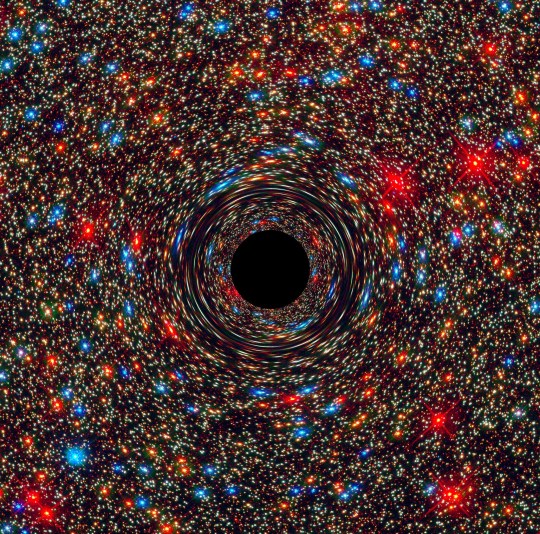
This computer-simulated image shows a supermassive black hole at the core of a galaxy. The black region in the center represents the black hole’s event horizon, beyond which no light can escape the massive object’s gravitational grip. The black hole’s powerful gravity distorts space around it like a funhouse mirror. Light from background stars is stretched and smeared as it skims by the black hole. You might wonder — if this Tumblr post is about invisible things, what’s with all the pictures? Even though we can’t see these things with our eyes or even our telescopes, we can still learn about them by studying how they affect their surroundings. Then, we can use what we know to make visualizations that represent our understanding.
When you think of the invisible, you might first picture something fantastical like a magic Ring or Wonder Woman’s airplane, but invisible things surround us every day. Read on to learn about seven of our favorite invisible things in the universe!
1. Black Holes

This animation illustrates what happens when an unlucky star strays too close to a monster black hole. Gravitational forces create intense tides that break the star apart into a stream of gas. The trailing part of the stream escapes the system, while the leading part swings back around, surrounding the black hole with a disk of debris. A powerful jet can also form. This cataclysmic phenomenon is called a tidal disruption event.
You know ‘em, and we love ‘em. Black holes are balls of matter packed so tight that their gravity allows nothing — not even light — to escape. Most black holes form when heavy stars collapse under their own weight, crushing their mass to a theoretical singular point of infinite density.
Although they don’t reflect or emit light, we know black holes exist because they influence the environment around them — like tugging on star orbits. Black holes distort space-time, warping the path light travels through, so scientists can also identify black holes by noticing tiny changes in star brightness or position.
2. Dark Matter

A simulation of dark matter forming large-scale structure due to gravity.
What do you call something that doesn’t interact with light, has a gravitational pull, and outnumbers all the visible stuff in the universe by five times? Scientists went with “dark matter,” and they think it's the backbone of our universe’s large-scale structure. We don’t know what dark matter is — we just know it's nothing we already understand.
We know about dark matter because of its gravitational effects on galaxies and galaxy clusters — observations of how they move tell us there must be something there that we can’t see. Like black holes, we can also see light bend as dark matter’s mass warps space-time.
3. Dark Energy

Animation showing a graph of the universe’s expansion over time. While cosmic expansion slowed following the end of inflation, it began picking up the pace around 5 billion years ago. Scientists still aren’t sure why.
No one knows what dark energy is either — just that it’s pushing our universe to expand faster and faster. Some potential theories include an ever-present energy, a defect in the universe’s fabric, or a flaw in our understanding of gravity.
Scientists previously thought that all the universe’s mass would gravitationally attract, slowing its expansion over time. But when they noticed distant galaxies moving away from us faster than expected, researchers knew something was beating gravity on cosmic scales. After further investigation, scientists found traces of dark energy’s influence everywhere — from large-scale structure to the background radiation that permeates the universe.
4. Gravitational Waves

Two black holes orbit each other and generate space-time ripples called gravitational waves in this animation.
Like the ripples in a pond, the most extreme events in the universe — such as black hole mergers — send waves through the fabric of space-time. All moving masses can create gravitational waves, but they are usually so small and weak that we can only detect those caused by massive collisions. Even then they only cause infinitesimal changes in space-time by the time they reach us. Scientists use lasers, like the ground-based LIGO (Laser Interferometer Gravitational-Wave Observatory) to detect this precise change. They also watch pulsar timing, like cosmic clocks, to catch tiny timing differences caused by gravitational waves.
This animation shows gamma rays (magenta), the most energetic form of light, and elusive particles called neutrinos (gray) formed in the jet of an active galaxy far, far away. The emission traveled for about 4 billion years before reaching Earth. On Sept. 22, 2017, the IceCube Neutrino Observatory at the South Pole detected the arrival of a single high-energy neutrino. NASA’s Fermi Gamma-ray Space Telescope showed that the source was a black-hole-powered galaxy named TXS 0506+056, which at the time of the detection was producing the strongest gamma-ray activity Fermi had seen from it in a decade of observations.
5. Neutrinos

This animation shows gamma rays (magenta), the most energetic form of light, and elusive particles called neutrinos (gray) formed in the jet of an active galaxy far, far away. The emission traveled for about 4 billion years before reaching Earth. On Sept. 22, 2017, the IceCube Neutrino Observatory at the South Pole detected the arrival of a single high-energy neutrino. NASA’s Fermi Gamma-ray Space Telescope showed that the source was a black-hole-powered galaxy named TXS 0506+056, which at the time of the detection was producing the strongest gamma-ray activity Fermi had seen from it in a decade of observations.
Because only gravity and the weak force affect neutrinos, they don’t easily interact with other matter — hundreds of trillions of these tiny, uncharged particles pass through you every second! Neutrinos come from unstable atom decay all around us, from nuclear reactions in the Sun to exploding stars, black holes, and even bananas.
Scientists theoretically predicted neutrinos, but we know they actually exist because, like black holes, they sometimes influence their surroundings. The National Science Foundation’s IceCube Neutrino Observatory detects when neutrinos interact with other subatomic particles in ice via the weak force.
6. Cosmic Rays

This animation illustrates cosmic ray particles striking Earth's atmosphere and creating showers of particles.
Every day, trillions of cosmic rays pelt Earth’s atmosphere, careening in at nearly light-speed — mostly from outside our solar system. Magnetic fields knock these tiny charged particles around space until we can hardly tell where they came from, but we think high energy events like supernovae can accelerate them. Earth’s atmosphere and magnetic field protect us from cosmic rays, meaning few actually make it to the ground.
Though we don’t see the cosmic rays that make it to the ground, they tamper with equipment, showing up as radiation or as “bright” dots that come and go between pictures on some digital cameras. Cosmic rays can harm astronauts in space, so there are plenty of precautions to protect and monitor them.
7. (Most) Electromagnetic Radiation

The electromagnetic spectrum is the name we use when we talk about different types of light as a group. The parts of the electromagnetic spectrum, arranged from highest to lowest energy are: gamma rays, X-rays, ultraviolet light, visible light, infrared light, microwaves, and radio waves. All the parts of the electromagnetic spectrum are the same thing — radiation. Radiation is made up of a stream of photons — particles without mass that move in a wave pattern all at the same speed, the speed of light. Each photon contains a certain amount of energy.
The light that we see is a small slice of the electromagnetic spectrum, which spans many wavelengths. We frequently use different wavelengths of light — from radios to airport security scanners and telescopes.
Visible light makes it possible for many of us to perceive the universe every day, but this range of light is just 0.0035 percent of the entire spectrum. With this in mind, it seems that we live in a universe that’s more invisible than not! NASA missions like NASA's Fermi, James Webb, and Nancy Grace Roman space telescopes will continue to uncloak the cosmos and answer some of science’s most mysterious questions.
Make sure to follow us on Tumblr for your regular dose of space!
4K notes
·
View notes
Text

The beautiful planet Saturn taken by the James Webb Space Telescope!
James Webb Space Telescope Discoveries
#space#space photography#space images#outer space#saturn#james webb space telescope#James Webb Telescope Discoveries (Facebook)
6K notes
·
View notes
Text



Atanas Dzhingarov
6K notes
·
View notes
Text
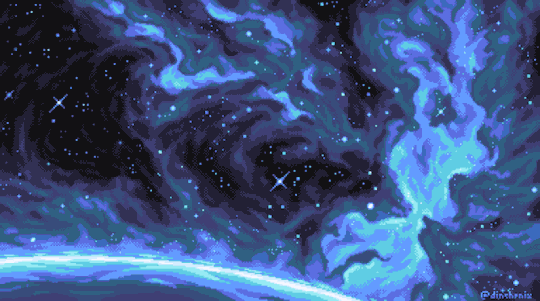
If you had the chance to join the journey through space, would you do it?
This artwork is also availabe as a wallpaper on my ko-fi here!💙
#dinchenix#pixelart#pixel art#pixel#artists on tumblr#art#space art#outer space#space#nebula#astronomy#space exploration#sci fi#scifiart#blue aesthetic#ドット絵#픽셀아트#my gifs
11K notes
·
View notes
Text
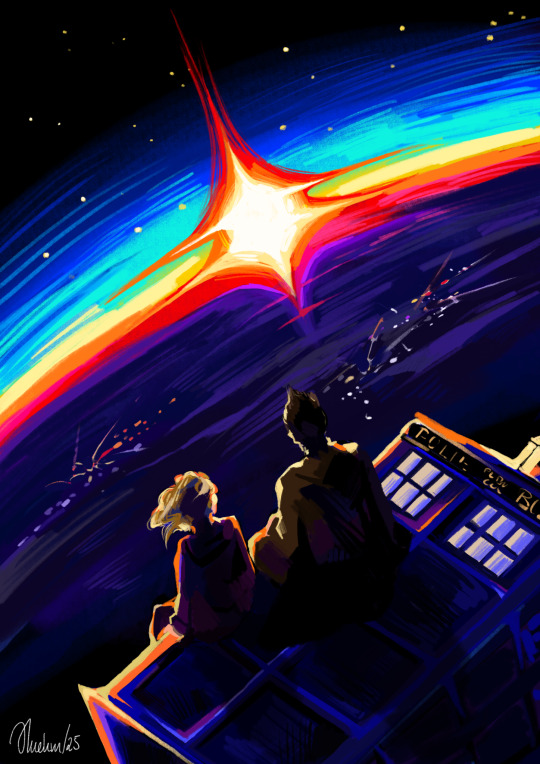
The Doctor ans Rose watching the sunrise
- inspired by ‚Sunrise in Orbit‘ by Astronaut Alexei Leonov -
#Sunrise in Orbit#Alexei Leonov#The Doctor#doctor who#rose doctor who#doctor who fanart#tenth doctor#tardis#outer space#Its hard too believe how much time has passed#fanart#procreate#digital art
4K notes
·
View notes
Note
since they’re on Earth, do the Transformers celebrate pride? Do they even know what LGBTQIA means?

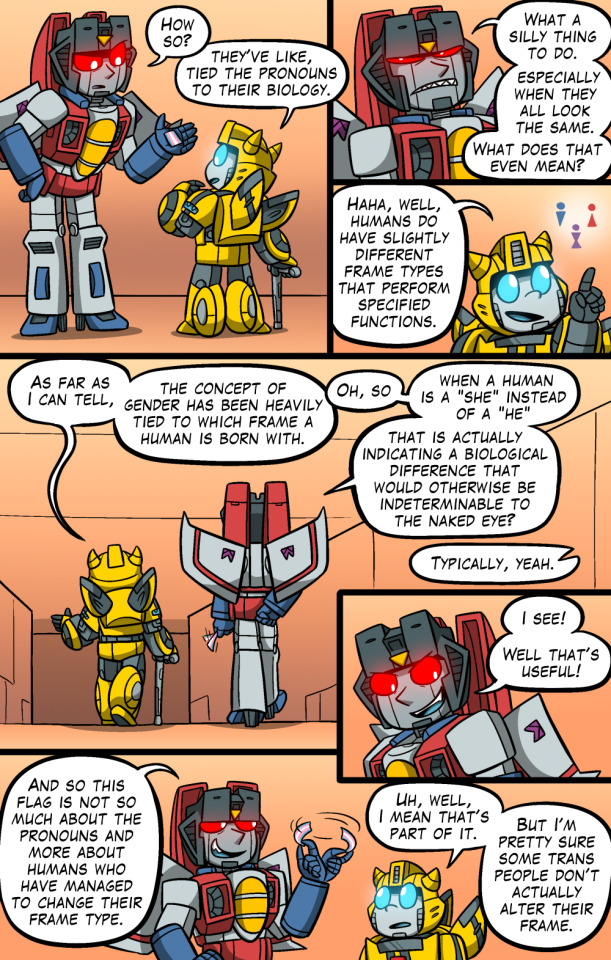


Happy Pride :>
#transformers#starscream#bumblebee#maccadam#pride#pride month#bumblebee knows a bit more about human culture than most bots#starscream is a cold constructed mech#so his spark was put into a pre constructed frame instead of naturally forming one#some speculate the reason he changes frames so often in idw1 is due to frame dysphoria#star isnt trans but the parallels are there and i think it's neat#im not trans either so apologies if ive misrepresented anything with this script#i just thought it would be fun to try and explain human gender norms to sexless killer alien robots from outer space#easier than explaining it to some humans amirite lmao
3K notes
·
View notes
Text

𝘐𝘧 𝘯𝘰𝘵𝘩𝘪𝘯𝘨 𝘴𝘵𝘢𝘺𝘴 𝘧𝘰𝘳𝘦𝘷𝘦𝘳, 𝘸𝘩𝘰 𝘭𝘢𝘶𝘨𝘩𝘴 𝘭𝘢𝘴𝘵?
#my art#outer wilds#outerwilds#outer wilds spoilers#outer wilds owlk#outer wilds hatchling#fanart#lord huron#who laughs last#space#scopophobia
4K notes
·
View notes
Text

The Cat From Outer Space, Norman Tokar, 1978
4K notes
·
View notes
Text




Alien (1979)
#alien movie#scifi#movies#scifiedit#science fiction#nostromo#spaceship#spacecraft#atmospheric#scifi aesthetic#space ship#gifs#gifset#space shuttle#outer space#space#space exploration#ridley scott#planets
2K notes
·
View notes
Text

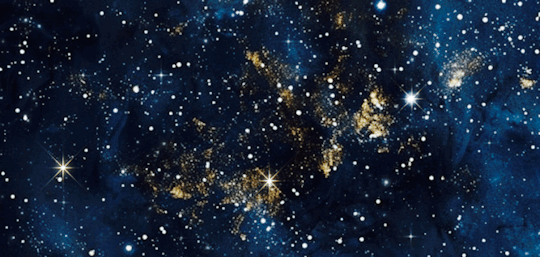

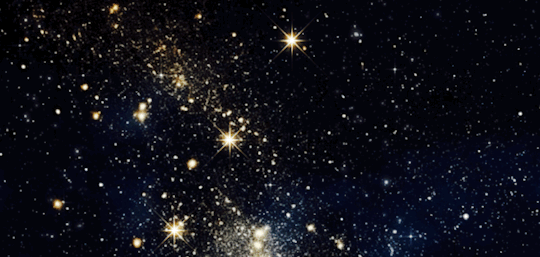
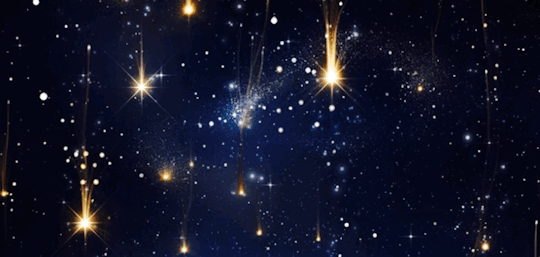
⭐️🖤💙⭐️Blue Royal Stars⭐️💙🖤⭐️
#gifs(edits) made by me :)#assassin1513#mystical#mystic#stars#space#space vibes#space aesthetic#outer space#cosmos#to infinity and beyond#beyond the stars#blue#dark blue#dark aesthetic#glitter#golden#gold#gold aesthetic#gold and blue#fantasy#dark fantasy#fantasy aesthetic#fairy#fairy aesthetic#magic#magical#astrology#astronomy#shooting stars
6K notes
·
View notes
Text

#grunge#vintage#space#outer space#aliens and ufos#alien#ufo#galaxy#science fiction art#retro aesthetic#moon and stars#space ship#rocket ship#astronaut#space cadet#extraterrestrial#stars#shooting star#constellations#night sky#astronomy
6K notes
·
View notes
Text






























blue graphics blinkies stamps
#carrd#carrd resources#carrd stuff#neocities resources#webcore#website#neocities#stamps#neocities stamps#2000s#rentry resources#rentry#rentry graphics#carrd inspo#rentry inspo#rentry decor#web resources#indie web#websites#web#old internet#ponyo ghibli#studio ghibli#kiki's delivery service#howls moving castle#starcore#outer space#jerma985#blue#blue aesthetic
16K notes
·
View notes